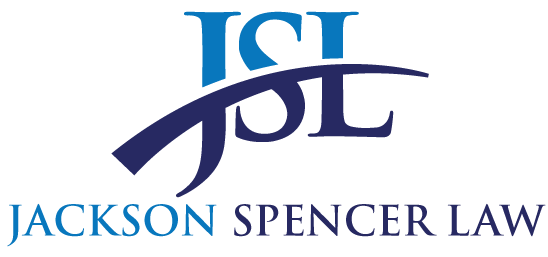The election countdown is on and we think it is important for workers to know where each Presidential candidate stands with respect to workers’ rights. Each candidate has a multitude of proposed policies that, if implemented, would undoubtedly impact employees. We’d like to provide a brief rundown of those policies in this article.
We know the news this year has been especially fatiguing (and anxiety-inducing) but we encourage everyone to get informed before voting in the election. Here are some of the primary promises from each candidate that would likely impact U.S. workers:
Biden promises:
- Several COVID-relief measures designed to help essential workers, the unemployed, and entrepreneurs;
- To strengthen union protections and make it easier for employees to unionize;
- Extensive “Buy American” policies to bring back (and keep) jobs in the United States, and;
- No new taxes for Americans making less than $400,000 per year and additional tax credits for families.
Trump discusses the promises he kept from his first term:
- The Tax Cuts and Jobs Act provided tax relief to 82% of middle-class workers;
- Tax cuts for small businesses and corporations create growth, increased the GDP, and reduced unemployment (pre-COVID);
- His administration’s apprenticeship program provided paid, on-the-job training for millions of Americans, and;
- Changes to several U.S. Dept. of Labor regulations that impact employees on matters such as overtime and health insurance.
Now, let’s take a slightly deeper look at each of these proposals. To reduce any form of media bias, we have taken these proposed policies straight from each candidate’s election website.
We do not take a position on the accuracy or practicality of any of the statements made on the candidate’s election websites. Our opinions or predictions regarding the impact of a particular policy on employees are italicized for clarity. Our goal is merely to inform and get you thinking about how each candidate might impact you as a worker.
What a Biden Presidency Might Look Like for Employees
While Biden’s election website outlines several key issues and proposals for dealing with each, the issues that will likely impact employees the most are: Jobs & Economic Recovery and Taxes. Let’s take a closer look at each.
Jobs & Economic Recovery:
Biden promises to provide state and local governments with aid to ensure essential workers aren’t laid off. He would extend crisis unemployment insurance to help those out of work and provide a comeback package for Main Street businesses and entrepreneurs. He also plans to create a Public Health Jobs Corps to put people to work fighting the pandemic. These are likely some of the most pressing issues for workers striving to make ends meet as we deal with the coronavirus pandemic.
Biden also says he would send economic recovery legislation to Congress to make it easier for workers to organize a union and bargain with their employers for higher wages. This may not mean much for workers who are already organized and represented by a union but could lead to major changes for those who form a new union (if and when the legislation is passed).
Along with stronger union protections, Biden wants to make a $400 billion procurement investment for American products, materials, and services. He also wants to make a $300 billion investment in technologies like electric vehicles, 5G, and artificial intelligence. To learn more about Biden’s extensive “Buy American” policies, check out his website here. In general, these policies could help employees who have seen their jobs outsourced to other countries and those who work with innovative technology.
Another new promise is Biden’s plan to ensure the U.S. government “captures a share of royalties of high-profitable products developed with federal R&D funding.” Corporations retaining a high share of royalties acquired through federal funding is a hot point of intellectual property law that many have long argued is unfair to the average American. For instance, many biomedical products are developed with public funds. Many are concerned that taxpayers contribute to the development of these products, yet still pay exorbitant prices to consume them. Biden’s proposal, if followed through, could affect the profitability of industries that receive government funding for research and development (like health, energy, defense, and technology).
Taxes:
Many policies affect employees both directly and indirectly, and tax policies are one of those issues that stand to impact workers.
According to Biden’s election website, he promises not to increase taxes for anyone making less than $400,000 per year and to enact a dozen “middle class tax cuts.” He plans to balance tax savings for middle class workers by increasing the capital gains tax rate on investments to 39.6%. He also plans to raise the corporate tax rate, raise the minimum tax for all foreign earnings of U.S. companies, and impose a tax penalty on corporations that ship jobs overseas.
This is a lot to break down. No tax increases for those making less than $400,000 per year will likely benefit the majority of American workers, absent the 1%. Most American workers probably will not be affected by an increase on capital gains taxes because the top 20% of households (ranked by income) receive 90% of capital gains. Raising the corporate tax rate could produce more federal tax revenue but could also potentially lead to layoffs depending on how corporations respond to the tax hike. Penalties on companies that offshore jobs and an increased tax rate on foreign earnings could encourage companies to move or keep jobs in America – benefitting American employees who work in industries that have historically sent jobs overseas.
Additionally, he would raise the top individual income rate back to 39.6% and ask those making more than $1 million to pay the same rate on investment income that they do on their wages. For families, he wants to raise the child tax credit to $3,600 for children under 6 and $3,000 per child for children ages 6-17 throughout the duration of the COVID-19 crisis. Families would have the option to receive the child tax credit as monthly payments if they choose. It doesn’t take much explanation to see how these changes could benefit most working families. Workers with children could keep more of their earned income and only those making over $518,401 would be affected by the increased tax rate.
He vows to help working families afford health insurance by ensuring no family spends more than 8.5% of their income on health insurance through tax credits. He would also offer up to $8,000 in tax credits to help low and middle-income families pay for childcare. Since many provisions of the Affordable Care Act have been repealed during Trump’s first term, reducing the amount most Americans spend on health insurance could benefit many workers who are self-insured or have high-deductible insurance plans. Childcare tax credits could also help families both get to work and/or increase hours worked.
Biden’s election website goes into much greater detail about each of these policy objectives than we can possibly recreate in this article. We highly recommend that you educate yourself about each candidate’s policies and how they pertain to workers.
What a Second Trump Term Might Look Like for Employees
President Trump’s election website focuses on “promises kept” instead of proposing new policies. Like Biden’s website, Trump outlines several different issues, but two issues hold the most potential for workers: Economy & Jobs and Regulation. Let’s take a closer look at each.
Economy & Jobs:
Trump claims The Tax Cuts and Jobs Act (TCJA) provided tax relief for 82% of middle-class families, doubled the Child Tax Credit (CTC) for an additional $1,000 per child, and doubled the standard deduction. Increasing the standard deduction likely made tax-filing simpler for most families who may have otherwise had to itemize in order to maximize deductions. The increased Child Tax Credit also benefits families with children, even those who don’t owe taxes. The CTC was also more widely available to middle and upper class families who couldn’t claim the credit in years past.
The TCJA cut taxes for small businesses by 20%. Trump also reduced the corporate tax rate and repealed the individual mandate previously required by the Affordable Care Act. He claims that the reduced tax burden for businesses were used to fund bonuses and wage increases for 4.8 million workers. If you are a proponent or believer in trickle-down economics, business tax cuts could positively impact employees by leading to more new hires or wage raises. However, the data on the success of trickle-down economics is up for debate and often divides along party lines. We won’t speculate on whether or how much these corporate tax cuts directly impacted employees.
Trump also boasts that his pro-growth policies have generated “6 million new jobs and wages have grown at more than 3% for 10 months in a row.” In particular, he says the manufacturing industry created nearly half a million new jobs, 625,000 new construction jobs have been added, and Hispanic, Asian, and African American unemployment rates have reached record lows during his presidency. He claims there are “more than a million more job openings than unemployed persons in the U.S.” Up until March 2020, the economy did appear to grow (hovering around 3%) and unemployment rates dropped (from 4.7% in January 2017 to 3.5% in December 2019). The U.S. economy took quite a hit after March, however, when may states started shutting down due to the coronavirus pandemic (losing more than 30% of GDP).
Trump also signed an executive order that expanded apprenticeship programs and on-the-job-training to provide “more Americans access to an affordable education that leads to a well-paying job.” He claims the order has already created job training opportunities for 6.5 million Americans. This program did provide paid, on-the-job learning for millions of Americans and boasts that 94% of apprentices retained employment across at least 10 industries.
Trump’s election website provides even more information about executive orders that were passed to help American workers.
Regulation:
During his first campaign, Trump promised to “roll back job killing regulations.” He signed an executive order mandating that two regulations be eliminated for every regulation created in order to reduce compliance costs. He claims his administration has actually eliminated 22 regulations for every new regulatory action, saving $8.1 billion in lifetime net regulatory cost savings.”
From an employee’s standpoint, let’s take a look at some of the Department of Labor regulations that have changed during Trump’s first term. For the sake of brevity, we will only cover rule changes that are already in effect.
- Changes to the method of computing overtime for fluctuating workweeks enabled employers to count bonuses and premiums toward the rate of pay for non-exempt employees. The administration claims this would “permit employers…to pay employees a wider range of supplemental pay.”
- Enacted a rule enabling employees to use health reimbursement arrangements to buy individual coverage. Proponents say the change provides small businesses with more healthcare options while critics claim the rule may encourage employers to drop coverage, shifting people into the individual insurance market.
To learn even more about the Trump administration’s achievements during his first term, please check out Trump’s website, Promises Kept.
No matter what happens in November, we’re here for employees. We hope this article educates you on issues that are important to all workers, and even more so, we hope you will go out and vote in the election this November!



